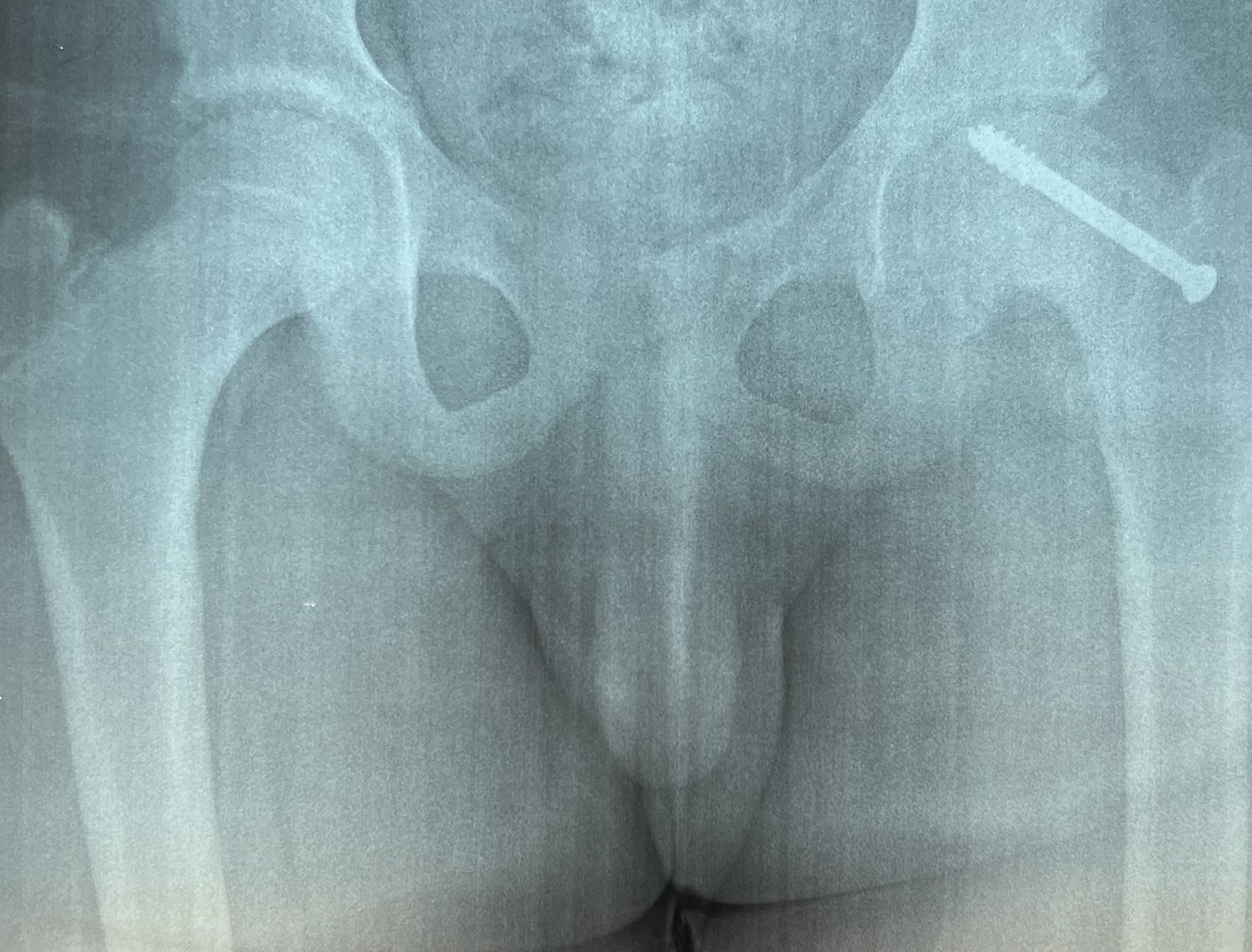Slipped capital femoral epiphysis or commonly referred to as SCFE, in short, is a condition that occurs in teens causing the head of the femur bone to slip off the neck of the femur.
I want to break down the big term –
slipped- to slide off or the slip
capital- the head of the femur bone
femur- the thigh bone
epiphysis; the part of the bone next to the growth plate.
In this article, you will learn about SCFE, it’s causes, and how it is treated.
Signs and symptoms of scfe
- Pain
Even though the problem occurs at the hip joint, it isn’t uncommon for children to complain about knee and thigh pain. This is because the hip joint and knee joint share a nerve which can lead to pain being referred from the hip joint to the knee joint.
- Limping
walking with a limp could be a result of pain or poor function of the abductor muscles of the hip or one leg being shorter than the other.
- Foot facing outwards.
This is called obligate external rotation of the foot. The foot faces outwards as the child walks.
Who is at risk for SCFE?
The exact cause of SCFE is unknown but there are some risk factors.
- Being overweight
Children who are overweight or obese are at a higher risk of getting SCFE.
- Malnutrition
Deficiencies in vitamin D, calcium and a deficit in a balanced diet could put a child at risk for SCFE.
- Metabollic conditions
These include conditions like hypothyroidism. This is where the thyroid gland is producing low levels of thyroid hormone.
- A history of SCFE on one side.
A person with a SCFE on one side is at risk of getting SCFE on the other side.
Classification of SCFE
SCFE can be categorized into stable and unstable.
SCFEs can be categorized into stable and unstable SCFE.
- Stable SCFE
This is where the child is able to walk on that leg. They have mild to moderate pain.
- Unstable SCFE.
An unstable SCFE is very painful and typically a child with an unstble SCFE has so much difficulty walking without support or even turning.
Investigation for a SCFE
- Xrays
These are the baseline investigations. Your doctor will get two views; the anterior and frog lateral views of your pelvis. These will quantify the amount of displacement of the head off the femur.
- MRI scans
An MRI will typically be done if there is suspicion of a SCFE that isn’t very clear on the xrays.
- CT scans
CT scans are valuable in evaluating bone pathology. This is most valuable in chronic SCFEs that may appear healed or malunited.
Treatment of SCFE
First things first. When a SCFE is diagnosed, the patient should immediately be admitted and placed on Bedrest until the surgery is done.
- Pinning of the SCFE.
This means that either pins or metallic screws are placed in the bone to prevent any further displacement of the bone.
- Surgical dislocation of the hip joint.
In some severely deformed Slips, the operation needed is to open up the joint, align the bone the right way and then place it back and hold it with screws.
Complications of SCFE
- Limb length discrepancy.
One leg may continue to be shorter than the other, especially for the SCFEs that are pinned in children who still have lots of growth remaining.
Also because the aim of the SCFE treatment is to achieve premature closure of the growth plate, that bone may stop growing while the one on the unaffected side continues to grow and this causes the limb length discrepancy.
- Avascular necrosis.
Avascular necrosis in the literal term means the death of bone as a result of no blood supply.
The slip could disrupt blood flow to the head of the femur and lead to the death of the bone.
In conclusion, SCFE is an emergency as it can compromise blood flow to the head of the femur and lead to its death. It is important to visit the hospital if a child complains of thigh, knee, and hip pain especially if there is no history of injury or if they are simply limping. Treatment is predominantly surgical.
